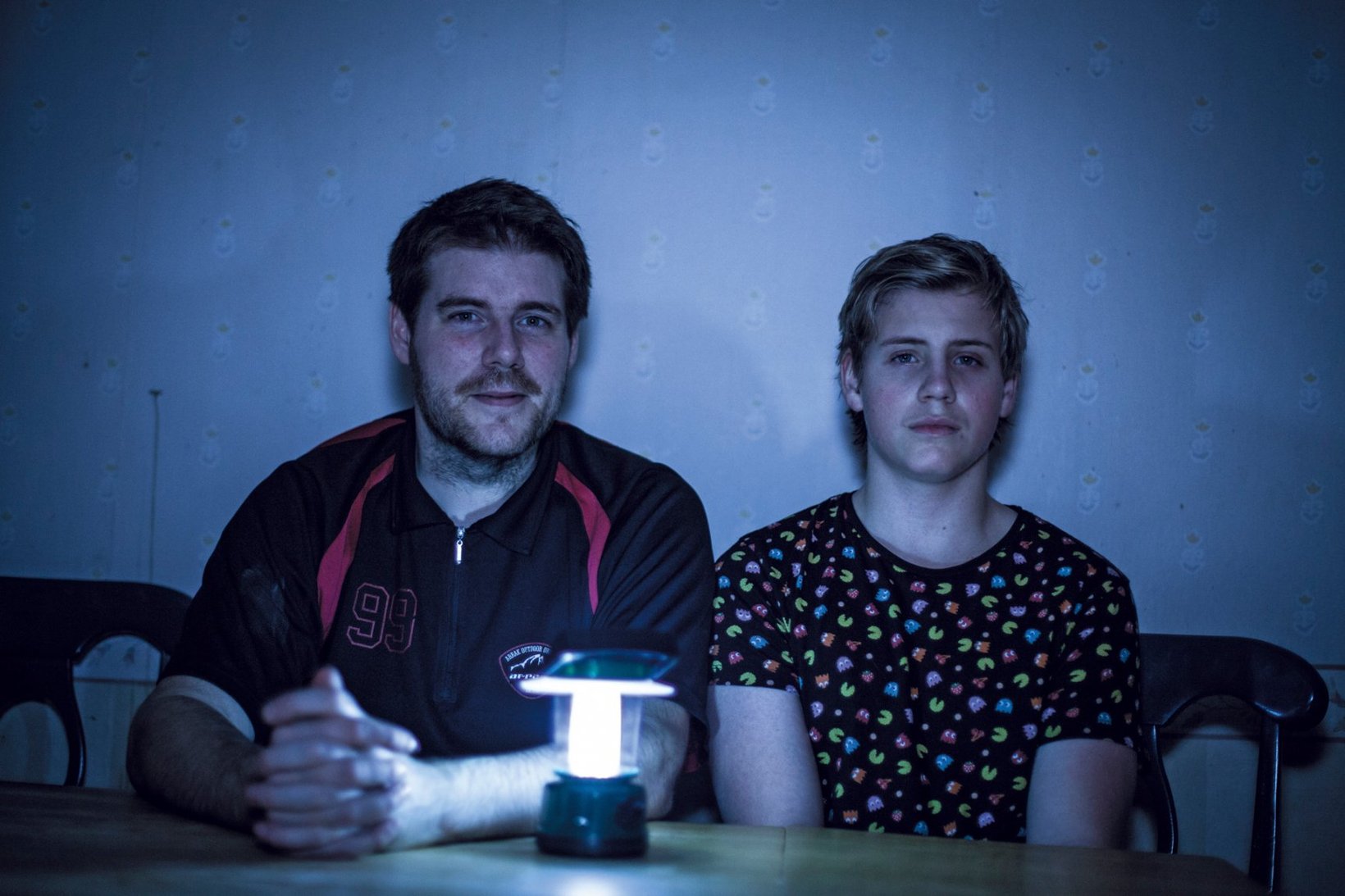Why care about electrical power if it is always there anyway? Well, some people do not trust this assurance and prepare for the worst. Follow us on a journey into the dark.
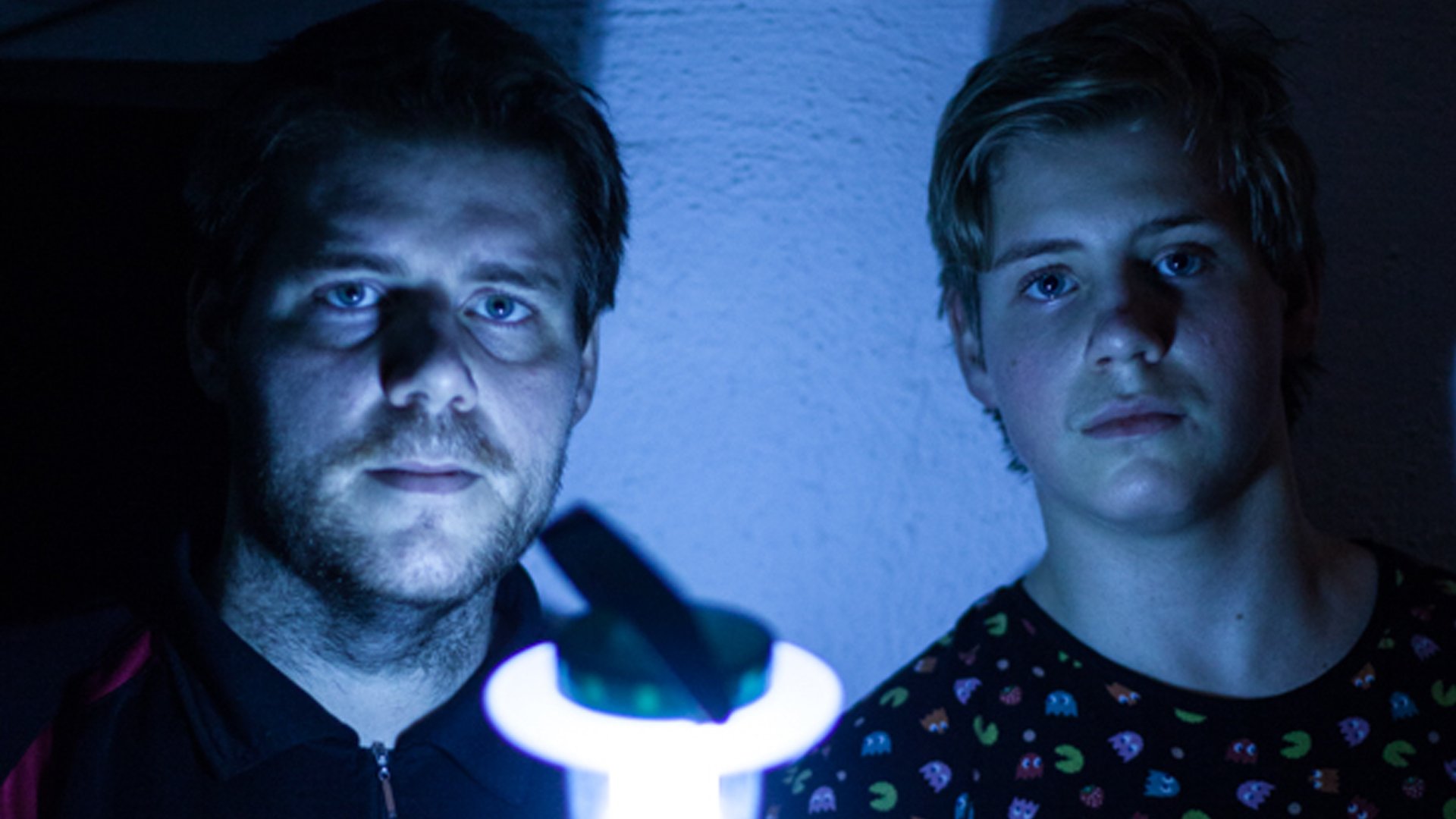
Overly cautious or rightfully prepared?
A major ice storm has hit large parts of Sweden. The stormy weather has lasted for six days already, and the country is immobilised by a ten-centimetre layer of ice that covers power lines and pushes trees to the ground. Cars and houses are coated with ice and many power lines have given way under the weight. In apartments and houses, people have sealed their windows to prevent heat from escaping. Among those who still have something to burn, a few meagre embers crackle in fireplaces and wood-burning stoves. When darkness falls, people gather round their candles and kerosene lamps to keep warm. In the wake of the cold weather, there is also a wave of greater solidarity, both in local communities and within families. People sleep close to each other in their living rooms, in tents or makeshift shelters improvised from furniture and blankets.
When an ice storm strikes
What would happen if a power outage lasted several weeks? Thirty-six-year-old Andreas Karlsson is one person who knows exactly what he would do. He has spent many years preparing himself for various crises, most of them involving extended power outages, and has everything his family would need to survive without outside help for 60 days and nights. Karlsson is a survivalist, or “prepper”, as they are commonly known. “People don’t understand how vulnerable our society is. Canada was struck by an ice storm in 1998 over an area as big as Sweden. And it could hit us too, during any winter,” he says.
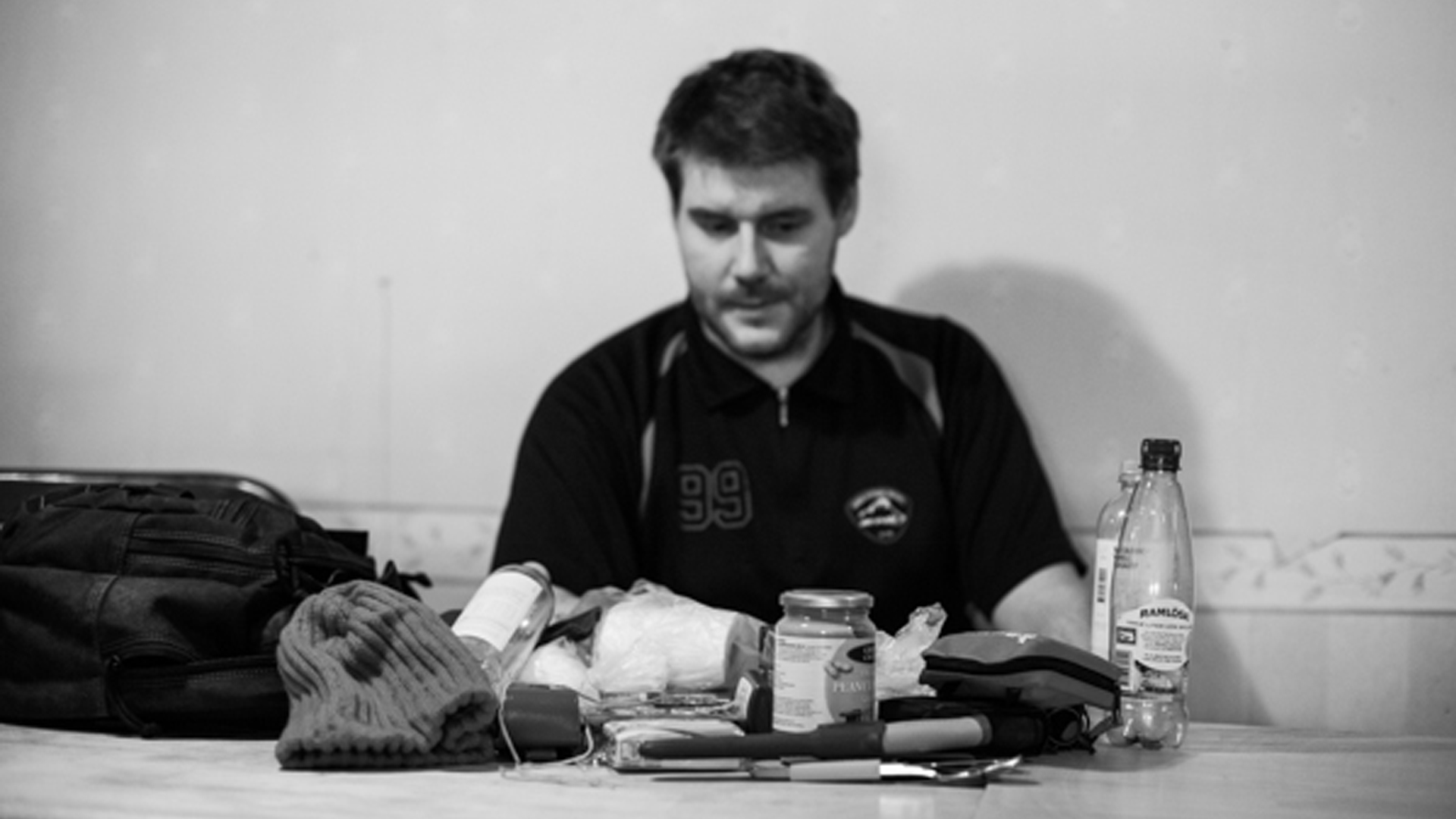
Preppers spend a large amount of time preparing for the worst-case scenario. This means planning the supply of water, food, shelter, security and of course, a life off the grid.
Surveys after the Canadian ice storm showed that difficulty in keeping warm and the lack of electricity, in some cases for a whole month, were the worst experiences, closely followed by stress and anxiety – all of which Karlsson aims to avoid with appropriate preparation.
We are sitting in Karlsson’s kitchen in a detached house in central Sweden. From the TV in the living room comes the sound of pop music and the roar of a crowd. Karlsson’s partner is, like every third Swede, watching the semi-finals to decide the Swedish Eurovision song contest candidate. Their teenage son is playing a computer game in his room. Like most people, they do not think about the fact that the TV or computer could go dead at any time.
“But just think if a power outage were to happen now, during the song contest – that would wake people up,” Karlsson exclaims.
Emergency bag always with him
On the table he places a bag which contains the most essential items he would need in the event of a crisis. He always takes it with him when he leaves home and calls it his “get-home bag.” He starts to take out its contents, which include army knives, a first aid kit, a compass, three empty plastic bottles, a jar of peanut butter, a suction tube containing a water purification filter and a battery-powered FM radio. When he finally takes out five silver coins, he laughs.
“Well, I’ve got these mostly because I’m a bit silly. I won’t really have any use for them. But during the siege of Sarajevo, there was a lot of trade in gold. And silver has always kept its value in times of crisis and currency collapse.”
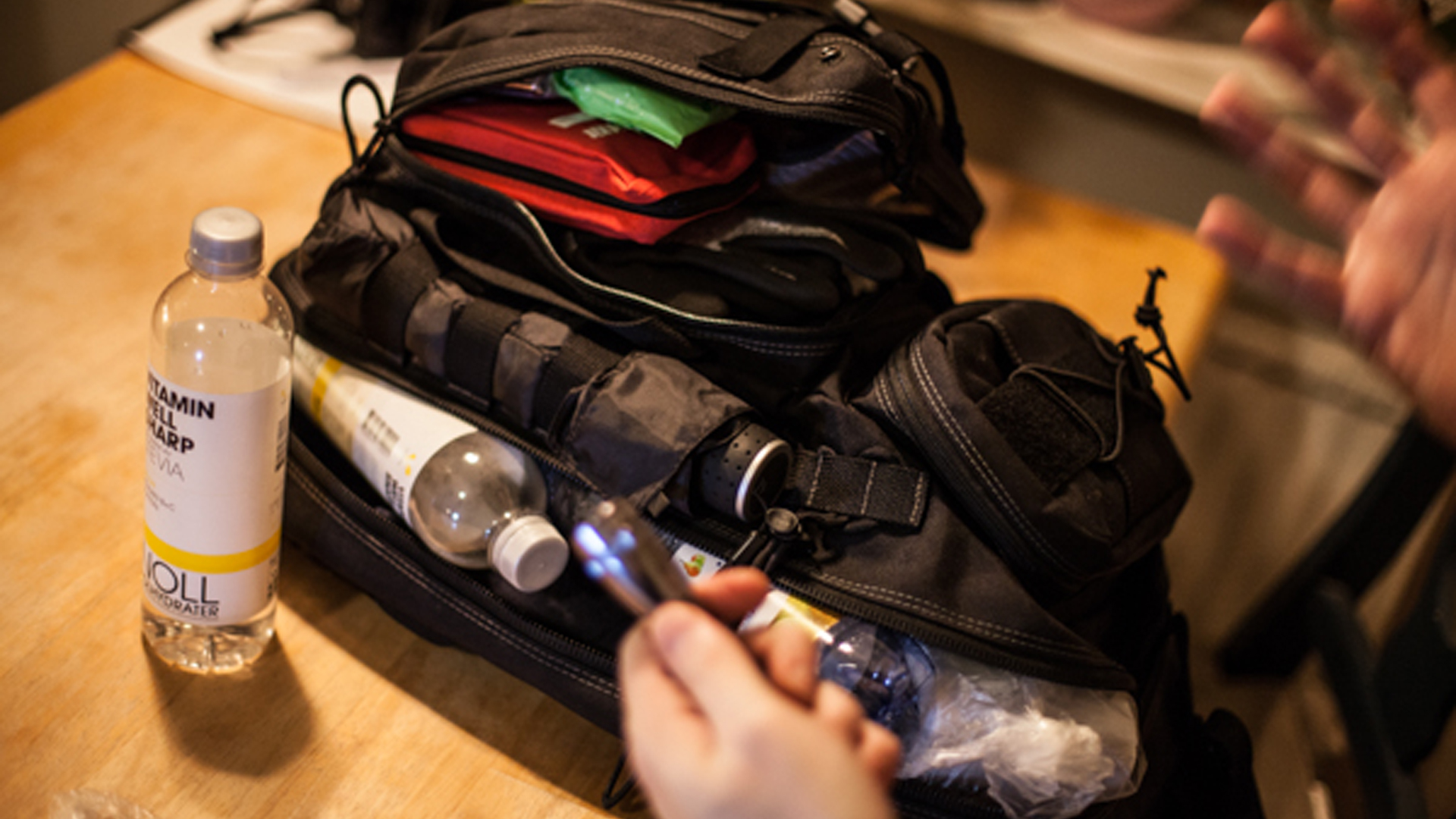
Karlsson always takes an emergency bag with him whenever he leaves the house so that he is prepared for crisis, or as preppers say “SHTF” – when the shit hits the fan
Asked what makes him want to prep, Karlsson answers straight away.
“I’d rather be prepared a year too early than a minute too late. I don’t want to take the risk of my son and partner going hungry, and a few weeks’ supply of food doesn’t cost so much.”
Power outage in Stockholm
About two months ago, Karlsson’s office in central Stockholm, where he plans work schedules for a customer services department, was hit by a power outage. The first thing he did was to fill up his three plastic bottles with water.
“My colleagues, on the other hand, just went on Twitter. But they probably don’t know that if the waterworks don’t have any power back-up, water will stop flowing in the pipes in a few hours.”
After phoning for information, Karlsson concluded that the power supply would be quickly reinstated. But he would have been prepared if that hadn’t been the case. “The backup battery of a mobile phone mast lasts about three hours. So after a couple of hours at most, I’d have contacted my family. If I felt that there was a risk of a lengthy blackout, I’d have taken to my feet. I would really want to leave Stockholm as far behind me as possible, as soon as possible. And it would be hard to get hold of a taxi,” says Karlsson, and smiles wryly.
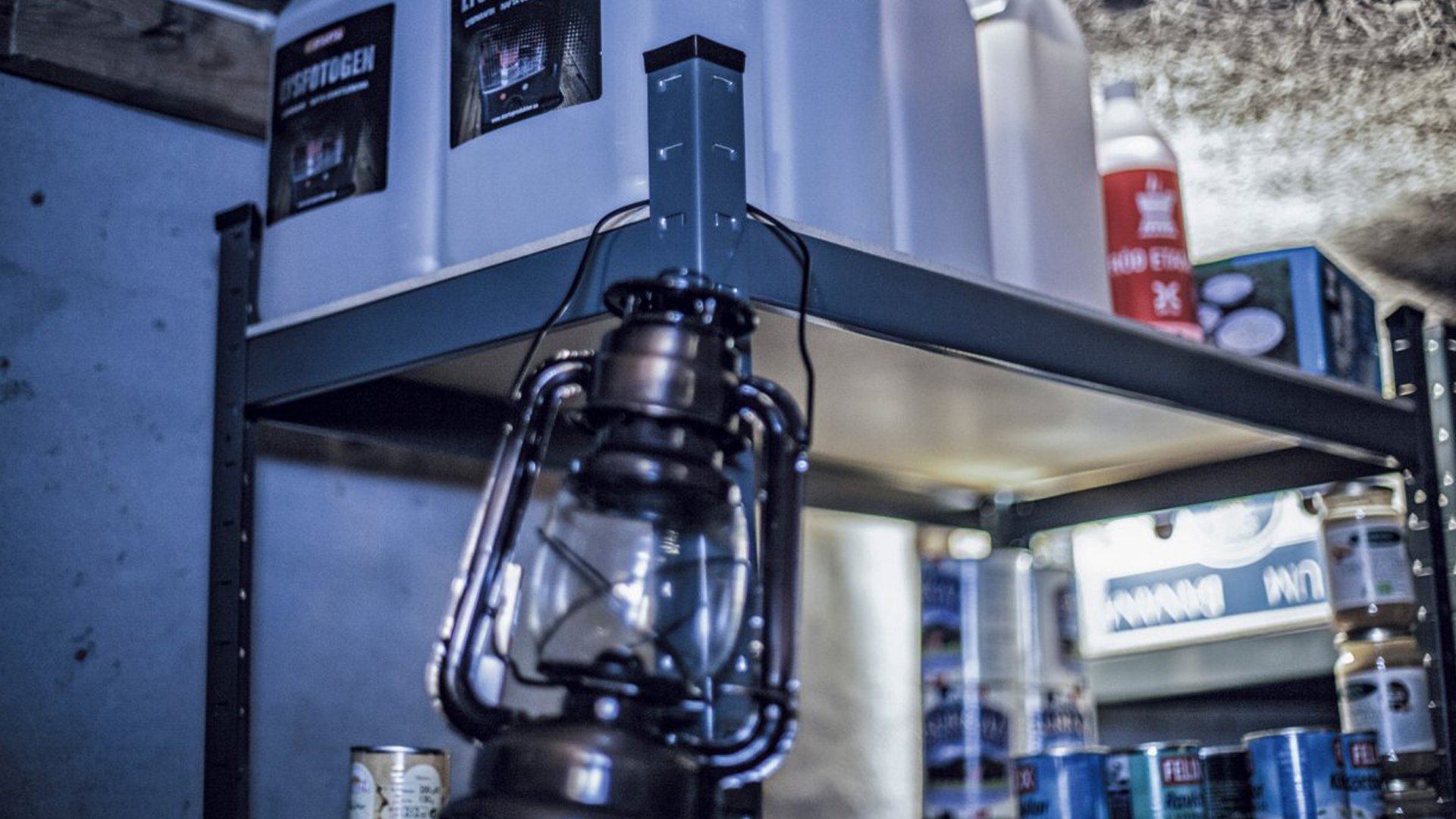
No power equals no lights.
What could go wrong if a power outage occurs?
Without public transport, it would take Karlsson three days to get home in reasonably good weather conditions.
“The weakest link in my preparation is obviously the distance between my work and my home.”
When Andreas finally reaches his home after three days, he would expect many people to be getting hungry. If it happened to be winter, many would also be suffering from the cold. “Shops close after half an hour without electricity. After twenty-four hours, food in refrigerators and freezers begins to go off. Many people will manage only a couple of days with what they have at home. Those of us who believe that our society is vulnerable have long protested against the reduced level of crisis preparation. Unfortunately the trend is moving in the wrong direction.”
On that basis, Karlsson has come to feel that it’s important to go public about prepping. That is why he has started a blog (urvaken.wordpress.com) that includes his name and photo, although this conflicts with a basic prepper principle, namely to maintain OpSec (Operational Security). This term was originally used by the military and refers to the protection of critical information during an operation. For a prepper, OpSec means, for example, not revealing one’s identity or information about one’s resources. The reason is that in the event of a crisis, other people can become a threat if they know where resources are available.
“What I’m doing is actually stupid, but it’s so important that I can’t be selfish. It’s more important to come out openly than sit and stew in my cellar.”
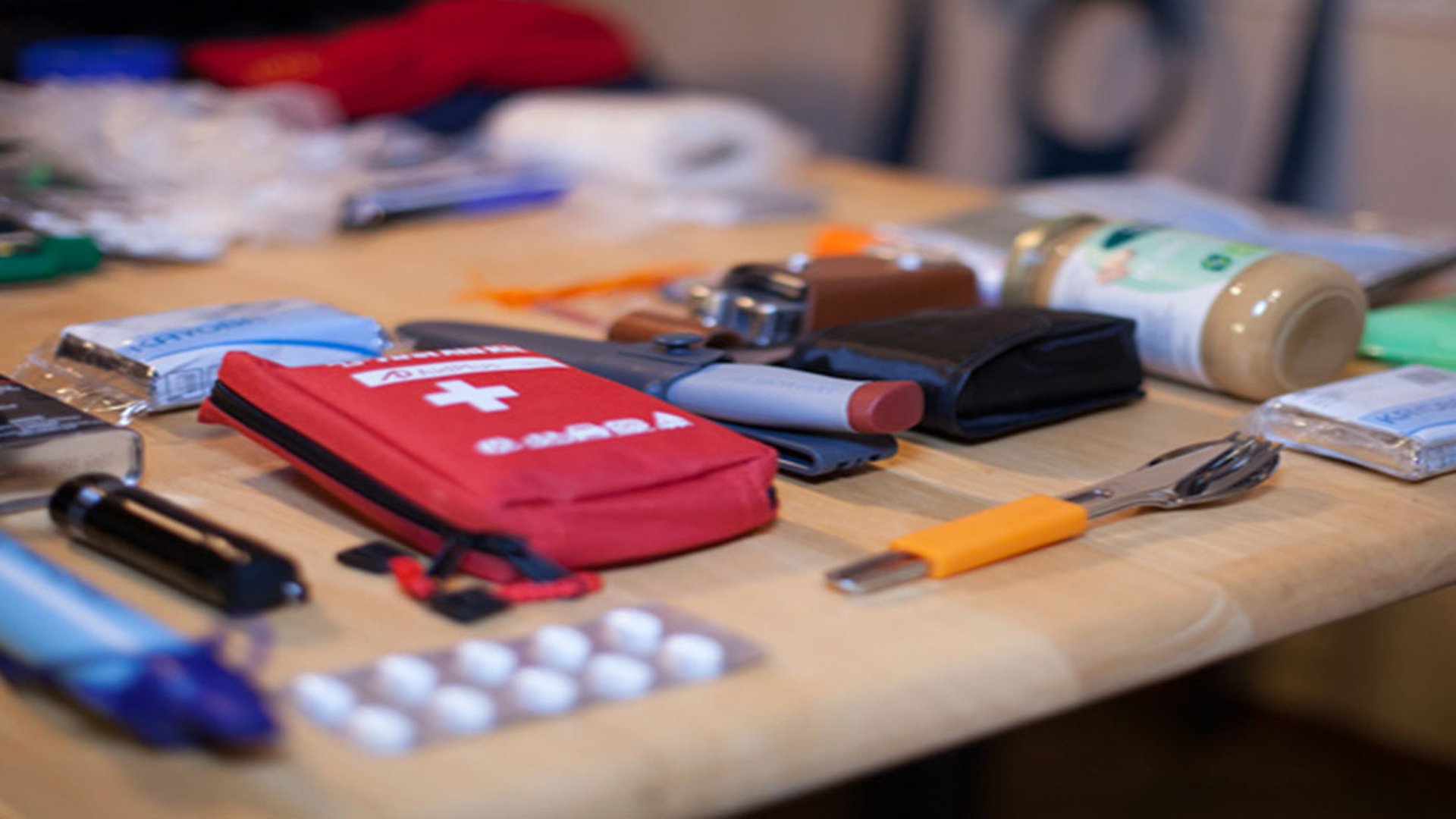
The most essential items in the event of a crisis.
In a prepper’s cellar
Karlsson gets up from his chair and shows us the door that leads down there. The cellar is where most of his crisis resources are. We go down the stairs, lit only by a flickering fluorescent lamp. It is cold and somewhat damp.
Shelves from floor to ceiling are packed with cans of paraffin and tins lined up in rows. A watertight plastic tub filled with toilet rolls lies in a corner. On the floor are further tubs filled to the top with items that are not particularly valuable or even useful in everyday life: paper plates, baby wipes, straps, wicks, matches and iodine tablets. In a crisis they would be worth their weight in gold. Literally.
“I think that the risk of a catastrophe is low, but its effect would be enormous. Prepping circles include people who are prepared for everything from a third world war to alien invasions, asteroid impacts and solar storms.” Eventualities that are not dissimilar to the plot in Karlsson’s favourite film, “The Road”, released in 2009. Though, when it comes to his own prepping, he says:
“I am not preparing to repopulate the earth. I think it’s enough for me and my family to be able to manage for two months.”
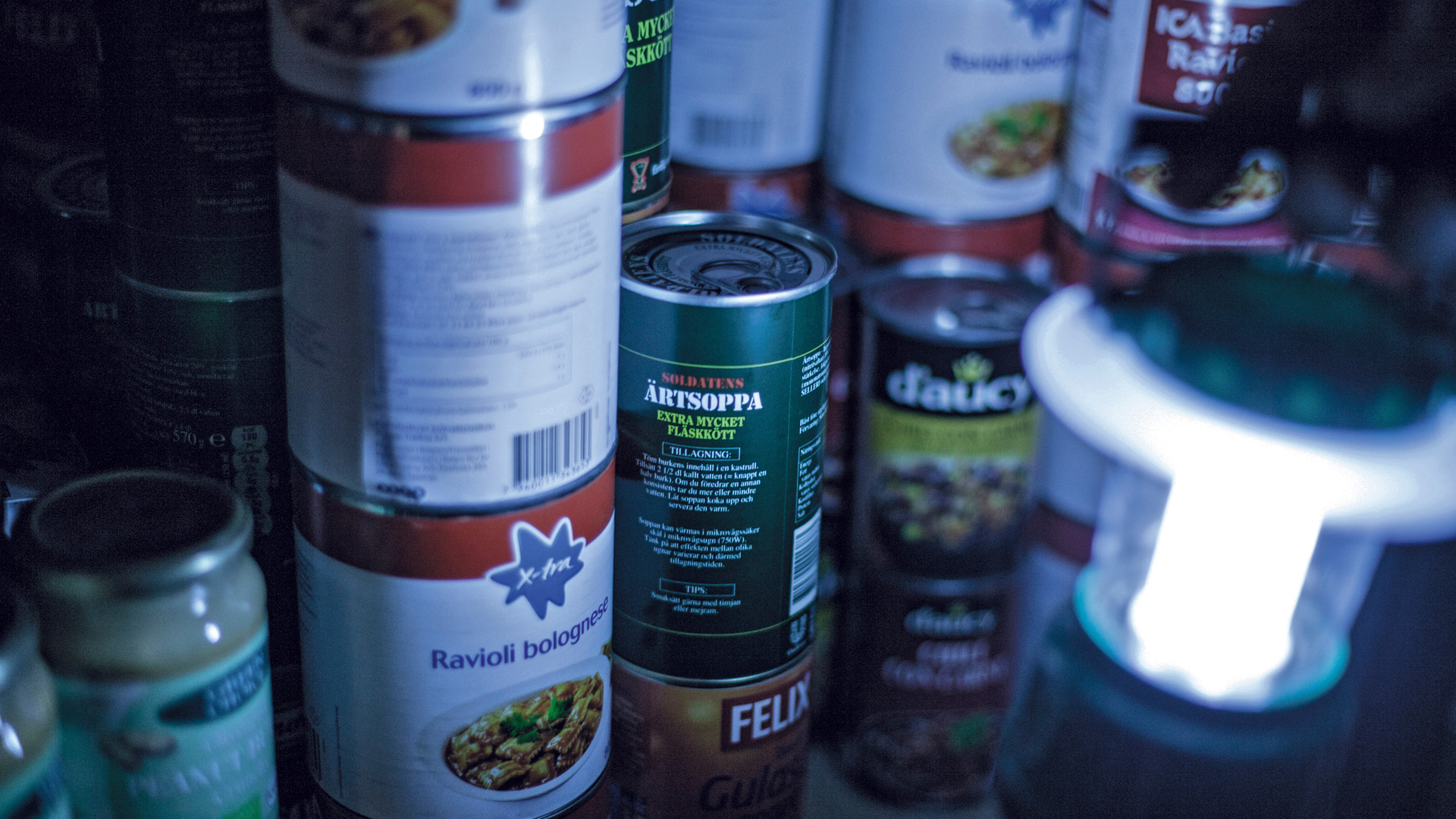
Most people would cope with the situation only a few days with the food they have at home.
Karlsson thinks that a crisis situation would worsen about a week after a power outage starts. He paints a scenario of a society on the edge of collapse due to the lack of clean water or breakdown of communications, for instance.
“Neither mobile phones nor email would work. And many people no longer own a battery-powered FM radio.”
He expects it to take about two weeks before people start to get desperate. “It’s then that the first cases of disease due to polluted water will occur. Fuel for standby generators will have run out in hospitals, meaning respirators and dialysis machines will stop. People will also freeze to death. The most tragic thing is that the weakest members of society will suffer the most serious problems.”
A prepper’s dilemma
After several years of existential pondering on the consequences of prepping, Karlsson decided to go public with his information. Because what would he do if he was sitting in the warmth with enough food, watching other people freezing and going hungry? When he talks about this, he puts his forehead into his clasped hands.
“That’s absolutely the hardest part of it all. What would you do? People will become desperate. I would be, if I were in their place. Whom should I help in such a situation? I’m not selfish and am basically someone who cares about others but I don’t know, I don’t have a good answer.”
When we talk about how others react to Karlsson’s prepping, he admits that many people wonder if he is a bit paranoid, and whether he exaggerates the threat scenario. “But when I talk to people in older generations, for example my grandparents, they find it quite natural to make preparations for hard times, having experienced war times and oil crises. Unfortunately, that attitude is no longer present in today’s society.” Surveys show that only one in ten Swedish households consider themselves responsible for managing the consequences of a power cut. But the law stipulates that all electricity users are expected to make suitable provision for themselves for twenty four hours. And that is for a “normal” case.
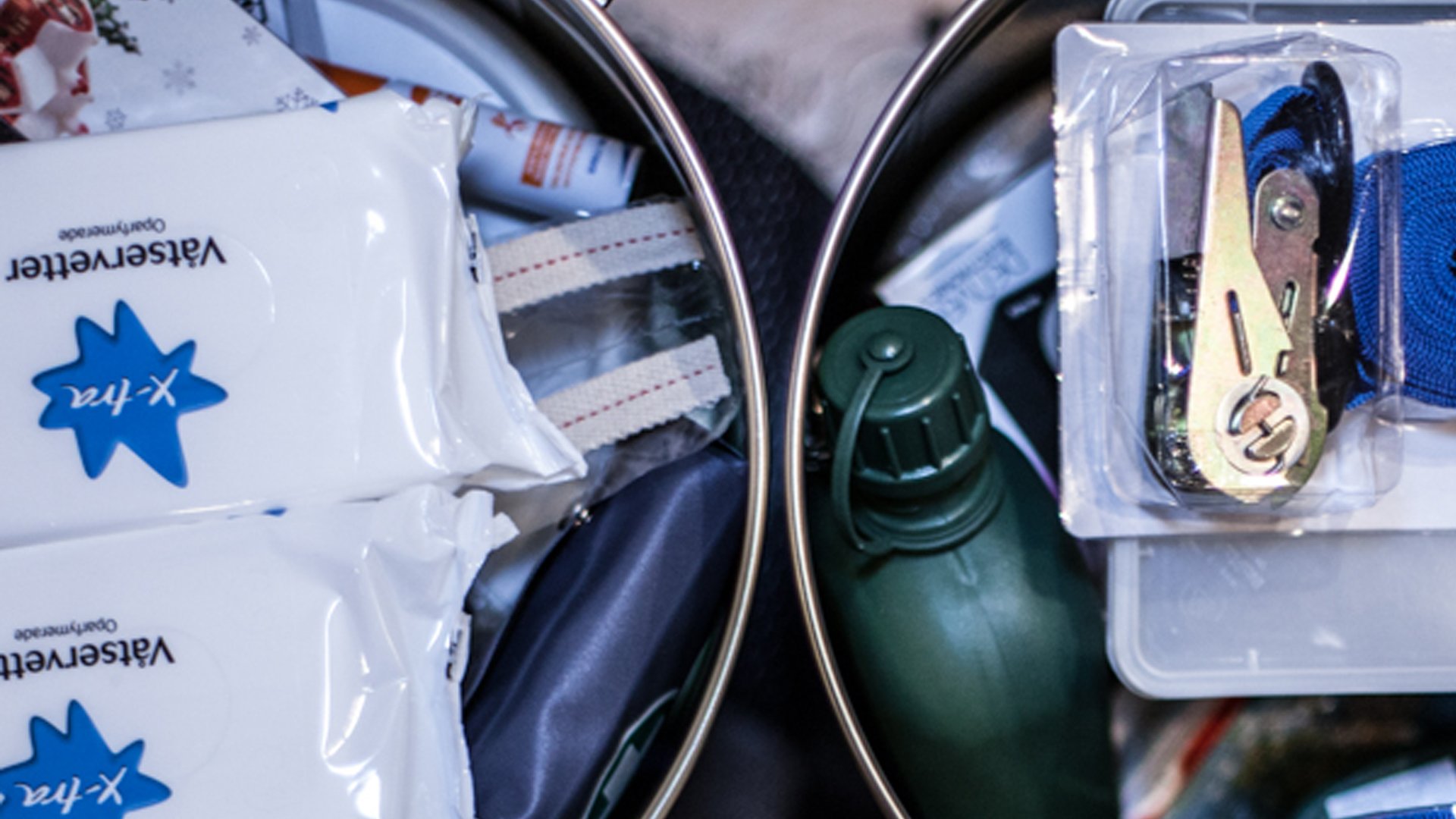
Valuable in times of crisis.
No-one is immune to a power outage
Mikael Toll heads the unit responsible for secure energy supply at the Swedish Energy Agency.
“Many people, especially of the younger generations, live in the belief that everything works well and that someone else is responsible. But it’s essential that people stop thinking they are immune to power cuts. "There’s a big discrepancy between the way the general public sees the resources of our society in a crisis and what is actually available,” he says. Toll thinks that Karlsson’s blackout scenario is relevant and mentions the ice storm that hit western Sweden in 1921.
“It did happen, so it could certainly happen again. Such a scenario could show us how vulnerable our society is, but we don’t really know exactly what would happen in the event of a long-term loss of power.”
Total blackout can bring Sweden to a standstill
The Swedish Energy Agency advises all electricity users to consider their own situation in the event of an extended power loss. This applies to practical matters such as the storage of water, lighting and having food for three days at home. But they should also get to know their neighbours.
“If more people can help each other and support elderly neighbours, for example, then more resources can be made available for the needs of the weakest members of society. The resources available to society in a crisis are not adapted to satisfy everyone’s needs from day one,” he says.
Toll is careful when he speculates what society would be like after a power loss lasting four weeks. After the Canadian ice storm in 1998, many people also experienced positive aspects and reported that the bonds between people grew stronger through helping and supporting each other through the tough situation. Nightmares of desperate, starving people roaming the streets did not come true, and burglary and vandalism were uncommon. Vandalism can, however, be a problem, as demonstrated by the riots in Berlin-Friedrichshain, Germany, in March, in which left-wing radicals took advantage of a power outage to set fire to things and rob a supermarket.
Nonetheless, Toll does think an extended power loss would be difficult for some:
“Without electricity, Sweden would come to a standstill. We have no alternative systems to resort to, and our whole society depends on electricity. Admittedly, it’s not likely that the entire country would be hit all at once. But it could happen, and Sweden’s readiness to handle an energy crisis during a cold period remains untested.”
More information:
The Prepper's guide to a long-term blackout
Power outages
A weird culprit
In January 2015, an eagle dropped a sheep’s head onto an electricity mast in Geraldton, Western Australia, leading to a power outage that lasted 900 minutes and affected 2,000 people.
Play stopped
During the 2013 Super Bowl, a major blackout left the players and 74,000 spectators in the stadium in the dark, and a billion people in front of their TVs without a picture, for 34 minutes. It has since earned the name Blackout Bowl.
Money waster
In 1987, a squirrel shut down the Nasdaq stock market for 82 minutes when it carried a piece of aluminium foil and shorted out the system. Another squirrel shut down the Nasdaq again in 1994 by chewing through cables.
Faulty fuse
In 2003, Britain had its biggest blackout in 25 years as a result of an incorrect fuse replacement: A 5,000 amp fuse was replaced by a one amp fuse at a substation. Twenty per cent of London’s electricity supply was affected.
Europe left in the dark
A few days before the turn of the millennium, hurricanes Lothar and Martin hit Europe and caused the greatest devastation to an electricity supply network ever seen in a developed country. Ten million people were affected and some 1.5 million customers had no water supply as the pumps lacked power. After a week, 500,000 customers were still without power, and it took 20 days to completely restore supply.
Gudrun hit hard
In early January 2005, central Sweden was hit by hurricane Gudrun, or Erwin as it was named in countries such as Germany. Two hundred million trees were torn down and 780,000 Swedish tariff customers were without power, some for several weeks.
What else is there to do?
Made in the shade
In the 1960s, the New York Times published a series of articles in which doctors reported an increase in the number of children born nine months after a major power outage. Since then, media have reported similar cases on a number of occasions. However, a more detailed study carried out in 1970 showed no connection between the two phenomena, a conclusion supported by studies of recent power outages.
Opportunistic criminals?
Experience from the Canada Ice Storm 1998 showed that burglary and vandalism were a problem for very few people. Only 1.5 per cent mentioned such problems in connection with the blackout, which lasted more than four weeks.
Photos by Maria Cruseman

